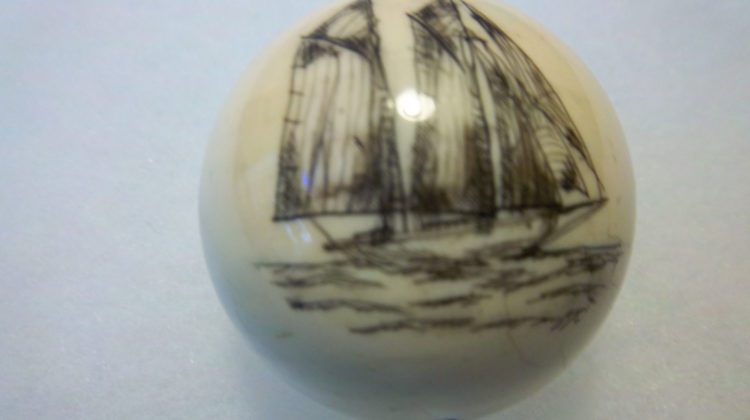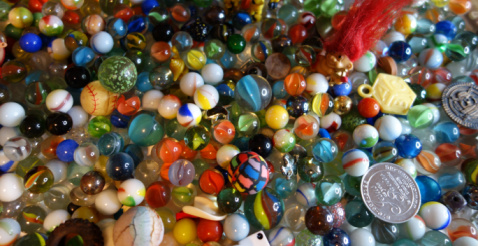
What is Scrimshaw?
Ever heard of a Scrimshander? It’s an odd word for sure, and no one is certain either of its origin or the origin of the word scrimshaw. While researchers cannot be certain of the origin of the name scrimshaw, it is certainly not for a lack of speculation. Scrimshaw is a proper name! It is an Anglo-Scottish surname with Old French origins.
We do know that scrimshaw is an art form. We also understand that early on for example on 18th century American whalers, scrimshaw was the tools which sailors made from whale bone and ivory. And we also know that Inuit and other Native Alaska tribes carved scrimshaw from walrus ivory and bone. They did this long before the art form had a name. They also did this before those carvings were brought onboard the New England schooners.
We have even heard scrimshaw attributed to the Dutch and old English words for “wasting time”. This seems highly unlikely since the Native Americans were making tools for survival. Also, the early Scrimshanders were making both tools to use and utilities like latches and hinges.
Sometime back, we were looking again at the scrimshaw marbles in Stanley A. Block’s Marbles Beyond Glass. We got to thinking: would it be possible to add a scrimshaw marble like these to our collection? We had no idea, but we knew that we had never seen such a marble in a museum. Nor had we seen one for sale in an antique shop nor even online. Eventually, it dawned on us that if we wanted one then we would need to commission it. In 2015 after a long and exhaustive search, we learned about Ancient Ivories Studios in Bethesda, Maryland. They still had a scrimshander associated with the Studio. They never use elephant ivory in their work. Their artists only use fossil ivories of walrus, oosik, and mammoth. We certainly did not want elephant ivory, and we had never even considered it for scrimshaw.
Scrimshaw Marbles?
Ancient Ivory Studios has been well known since 1968. On their website we learned about scrimshander Marvin Cohen. Mr. Cohen “…is widely recognized as one of America’s leading scrimshanders, as well as a creative designer specializing in custom and semi-custom knifemaking, jewelry wearables and objects that illustrate traditional Arctic region Native American tales and myths….”
This sounded almost too good to be true, but we had no idea whether or not Mr. Cohen would or could make a scrimshaw marble. We did learn that his works can be found in museums. Such places as the Sag Harbor Whaling Museum, and the Nantucket Historical Society, Nantucket, Mass. His pieces are represented in private, governmental and corporate collections in Europe, Japan and Australia. They are also found in numerous private collections within the U.S. Check the Ancient Ivories website to learn more about his work.
Well, we wanted a scrimshaw marble. We knew nowhere else to look so we called the Studio in Bethesda and spoke with Mr. Cohen. He was personable on the telephone and very professional. No, he specialized in scrimshaw jewelry and did not routinely make marbles. In fact, we have no idea whether or not he had ever made a marble before this commission.
A Special Order
He told us at the time that he had been an artist for 41 years. He was easing out of the business. But he did take a custom order. We were gob smacked! We placed a special order online for a 1¾” marble and the image which we asked Mr. Cohen to etch on it is a Gloucester Schooner as you can see in the marble photograph above.
Mr. Cohen’s Schooner has the typical two-masts as well as fore and aft sails. Certainly, this was a small whaler; the Wyoming had seven masts! Still, schooners play a pivotal role in history and they brought home the oil and baleen.
The studio says that it takes a lot of work to remain 200 years behind the times. Our marble looks exactly like it could have been carved onboard by whalers 200 years ago!
We were ecstatic that Mr. Cohen signed the work just as he does all of his art. In the photograph his initials are at the bottom of the waves under the bow of the schooner.
Our marble is creamy fossil ivory from the Woolly Mammoth. The Studios note that “Fossil Ivory remains warm and sensuous organic ivory; it is not petrified. It has developed many of its beautiful colors by taking up minerals from the ground.” Our marble, for example, has a distinct pink hue. The Studios also claimed that our fossil marble is 10,000 years old.
Woolly Mammoth and early humans did live at the same time. A recent study tells us that the ancient beasts may have even been in what is today New England with the earliest humans.
Our marble is unique; there can never be another like it. Over the years it has kept that soft buttery look. We have no idea how old the fossil is. We do know that it is the oldest marble in our collection. Now when we look at the schooner scrimshaw picture in Stanley Block, we think just how nice it is to have one!
Want to know even more about marbles? Buy our book!

